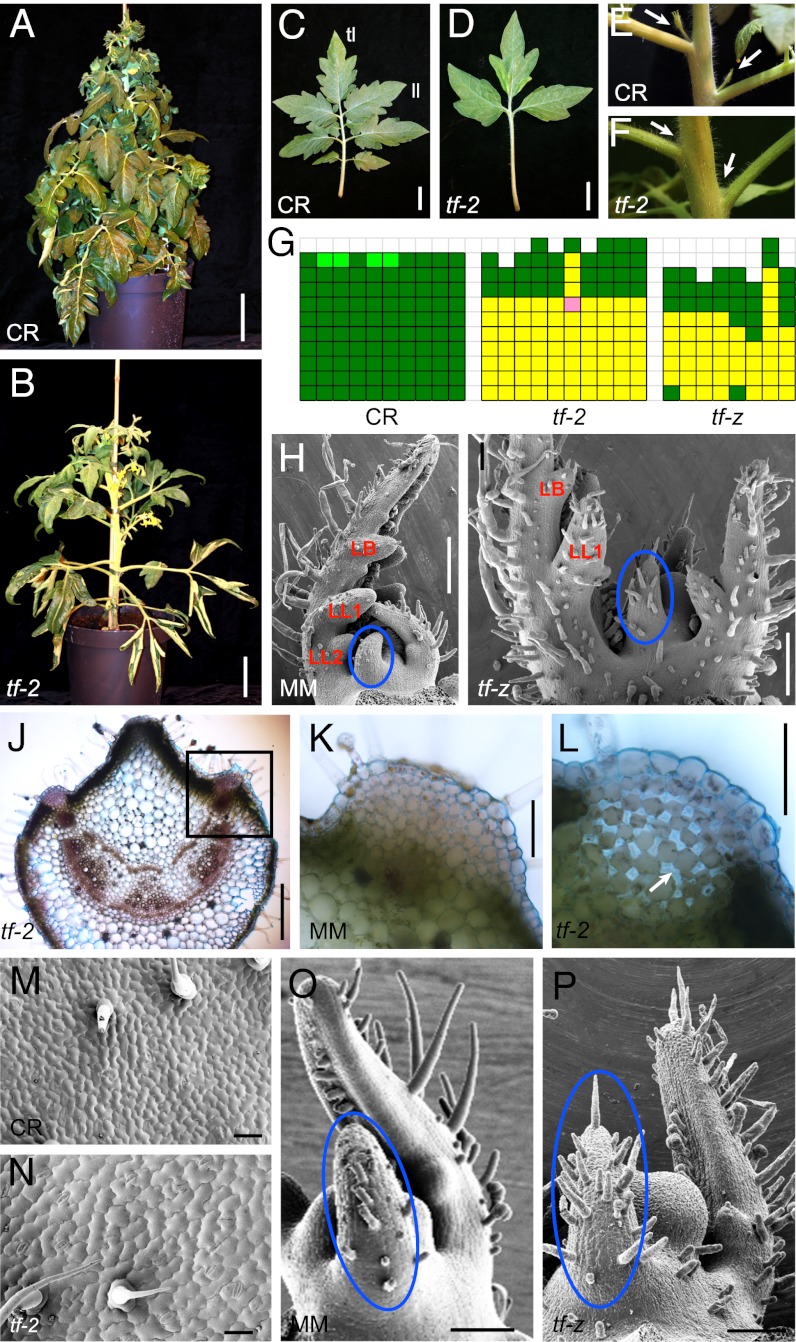Fig. 1.
Phenotypic characterization of tf mutants. (A and B) Growth habit of a Condine Red (CR) WT plant (A) and the tf-2 mutant (B). (C and D) Leaf phenotype of CR (C) and tf-2 (D). (E and F) Leaf axils of CR (E) with axillary shoots (arrows) and tf-2 (F) lacking axillary shoots. (G) Graphic representation of axillary shoot formation in CR, tf-2, and tf-z. Each column represents a single plant. Each square represents an individual leaf axil starting from the first true leaf in the lowermost row up to the last leaf formed by the primary shoot. Green color denotes an axillary bud/shoot, light green an accessory bud/shoot, yellow a barren leaf axil, and pink a leaf-like structure. (H and I) SEM analysis of Moneymaker (MM, H) and tf-z (I). Lateral leaflet primordia (LL1, LL2), leaf lobes (LB), and zones of differential trichome development (blue circles) are indicated. (J–L) Transverse section through the leaf rachis of tf-2 (J). Histology of the marginal zone, indicated in (J), of a MM WT (K) and a tf-2 (L) leaf rachis. (Arrow) An intercellular region. (M and N) SEM pictures of the leaf surface of the terminal leaflet (fifth leaf of 3-wk-old plants) showing a comparison of cell size in CR (M) and tf-2 (N). (O and P) Comparison of trichome development in P2 of MM (O) and tf-z (P). Zones of differential trichome development are indicated (blue circles). (Scale bars: A and B, 10 cm; C and D, 2 cm; J, 500 μm; H and I, 200 μm; K, L, O, and P, 100 μm; M and N, 50 μm.)

